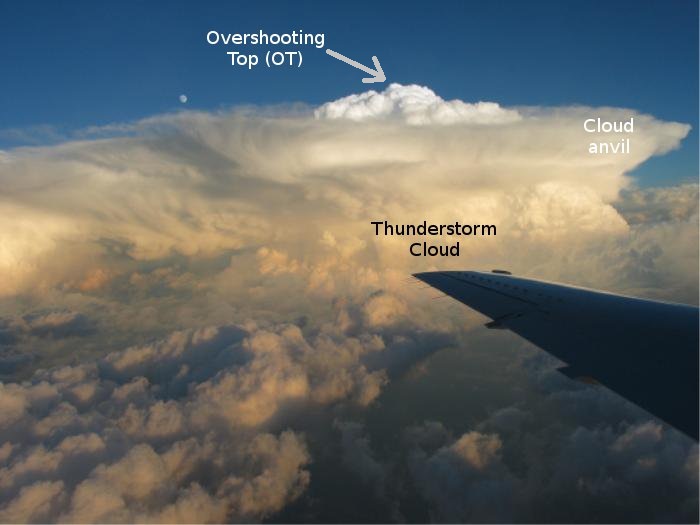Project Description
Motivation:
 Hailstorms constitute one of the major atmospheric risks in many parts of the world. While they are most frequently observed and studied in Central North America, hail hazard is less well-known in many other regions. Still, insured hail damage can reach hundreds of M€ in a single event also in these places. Compared to other atmospheric hazards, hailstorms concern only small areas. In combination with the low frequency at a single location, this means that little is known about the relative importance of the local hazard and risk, and about the atmospheric conditions favourable to strong convective storms producing hail. Due to the high but uncertain damage potential, there is considerable interest in this topic from the insurance industry. Knowledge on hail frequency and severity helps actors on the insurance market with more solid estimates of hail-linked monetary risks and to better estimate required premiums.
Hailstorms constitute one of the major atmospheric risks in many parts of the world. While they are most frequently observed and studied in Central North America, hail hazard is less well-known in many other regions. Still, insured hail damage can reach hundreds of M€ in a single event also in these places. Compared to other atmospheric hazards, hailstorms concern only small areas. In combination with the low frequency at a single location, this means that little is known about the relative importance of the local hazard and risk, and about the atmospheric conditions favourable to strong convective storms producing hail. Due to the high but uncertain damage potential, there is considerable interest in this topic from the insurance industry. Knowledge on hail frequency and severity helps actors on the insurance market with more solid estimates of hail-linked monetary risks and to better estimate required premiums.
Project Activities:
In this project, a stochastic model for the frequency, extent and severity of hail events has been developed for Europe, Australia, and South Africa and a version covering South America is currently under development. Research at KIT is focusing on the hazard component of the risk model. Satellite data provided in collaboration with NASA Langley is used to identify major convective storms associated with hail. The method leads to unique, spatially homogeneous event data set covering entire continents for time periods of more than a decade. Stochastic modelling of the frequency, length, width, and severity of hail events then allows to generate a large event set for hailstorms expected to occur in several thousand years. This event set can in turn be combined with insurance portfolios in order to estimate loss events for certain return periods. The aim of the project is also to improve the understanding of the relationship between the strength of convection and the formation of hail, and more generally the prevailing atmospheric conditions at the formation of hail events. Several other data sources including climate model data are considered in this context.
Partner:
Willis Towers Watson is a leading global advisory, broking and solutions company. Through the Willis Research Network (WRN), founded in 2006, it partners with a network of currently 50 public research institutions worldwide. WRN operates through the organization of common workshops with participation of their clients, the financing of staff hosted at the partner institutions as Willis research fellows, and regular individual work meetings between WRN staff and the partners. Dr. Heinz Jürgen Punge was the Willis research fellow for hail research at KIT between 2012 and 2022. Since then, the position was taken over by Dr. Jannick Fischer.
NASA Langley Research Center:
NASA Langley is a major public research institution in the US. In the context of this project, algorithms that allow the accurate identification of convective storms from satellite data have been developed.
Project duration:
The project started in June 2012 for an unlimited period with mutual annual cancellation options.
Publikationen:
Allen, J. T., Giammanco, I. M., Kumjian, M. R., Punge, H. J., Zhang, Q., Groenemeijer, P., Kunz, M., Ortega, K. (2020): Understanding hail in the earth system, Rev. Geophys., 58 (1), e2019RG000665, doi:10.1029/2019RG000665.
Bedka, K. M., Allen, J. T., Punge, H. J., Kunz, M., Simanovic, D., 2018: A Long-Term Overshooting Convective Cloud Top Detection Database Over Australia Derived From MTSAT Japanese Advanced Meteorological Imager Observations. J. Appl. Meteorl. Climatol., doi:10.1175/JAMC-D-17-0056.1.
Kunz, M., Blahak, U., Handwerker, J., Schmidberger, M., Punge, H. J., Mohr, S., Fluck, E., Bedka, K. M. (2018): The severe hailstorm in SW Germany on 28 July 2013: Characteristics, impacts, and meteorological conditions. Q. J. R. Meteor. Soc.,144, 231-250, doi:10.1002/qj.3197.
Punge, H.J., K. Bedka, M. Kunz, and A. Werner (2014): A new physically based stochastic event catalog for hail in Europe. Nat. Hazards, doi:10.1007/s11069-014-1161-0.
Punge H. J., M. Kunz (2016): Hail observations and hailstorm characteristics in Europe: A review. Atmos. Res. 176, 159–184, doi:10.1016/j.atmosres.2016.02.012.
Punge, H.J., Bedka, K.M., Kunz, M., Reinbold, A. (2017): Hail frequency estimation across Europe based on a combination of overshooting top detections and the ERA-INTERIM reanalysis, Atmos. Re., 198,34–43, doi:10.1016/j.atmosres.2017.07.025.
Punge, H. J., Bedka, K. M., Kunz, M., Bang, S. D., Itterly, K. F. (2023): Characteristics of hail hazard in South Africa based on satellite detection of convective storms, Nat. Hazards Earth Syst. Sci., 23, 1549–1576, doi:10.5194/nhess-23-1549-2023.
Wilhelm, J., Mohr, S., Punge, H. J., Mühr, B., Schmidberger, M., Daniell, J. E., Bedka, K. M., Kunz, M. (2021): Severe thunderstorms with large hail across Germany in June 2019. Weather, 76, 228–237, doi:10.1002/wea.3886.

